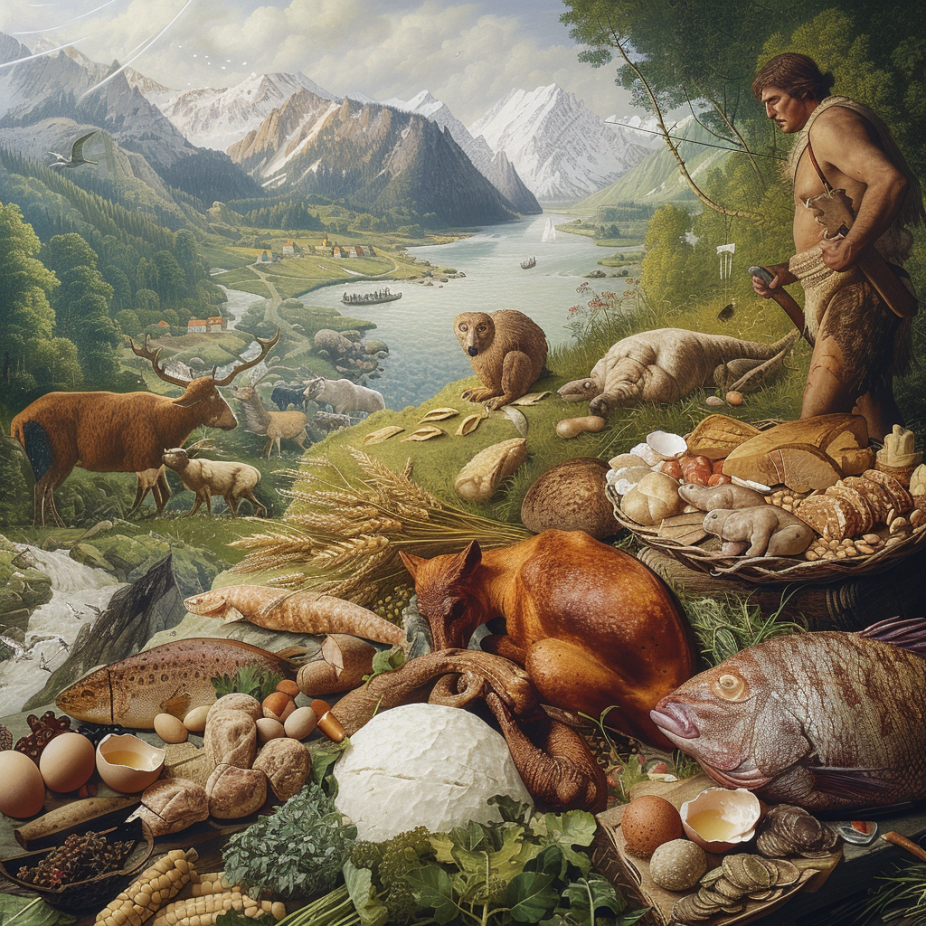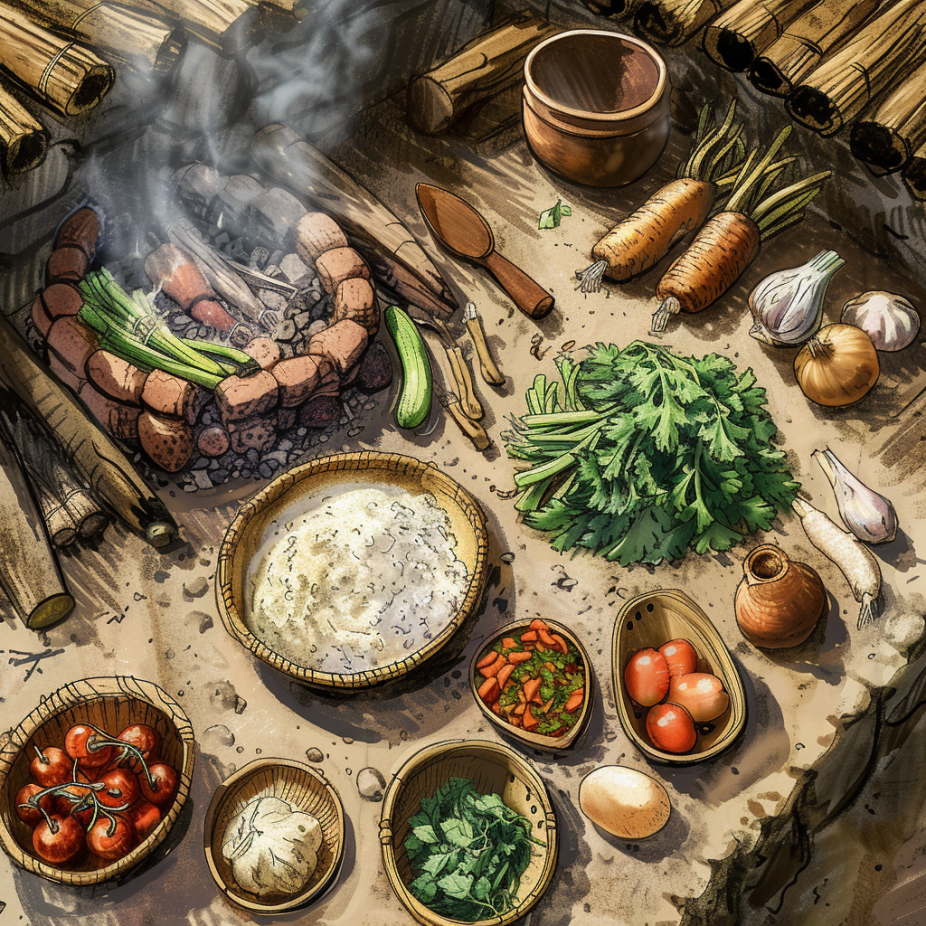In our quest for optimal health, it’s insightful to look back to what we eat 10,000 years ago. This journey into the past reveals a diet that was not just a matter of survival, but a blueprint for thriving in harmony with nature. Let’s delve into three key aspects of this ancestral diet.

1. Emphasis on Animal-Based Foods: The Cornerstone of Early Human Diet
A. High Reliance on Meat and Animal Products
10,000 years ago, our ancestors predominantly consumed animal-based foods. This era, predating widespread agriculture, saw humans thriving on meats like wild game and fish, alongside eggs, and raw dairy products. The nutritional density of these foods provided essential proteins, fats, and micronutrients vital for physical development and brain function. To understand more about the role of animal-based diets, you can read about the benefits and drawbacks of a carnivore diet here.
i. Nutritional Benefits of Red Meat
Red meat, particularly from wild game, was a staple. Rich in nutrients like B12, iron, and essential fatty acids, it supported various bodily functions. The health implications of eating fresh, organic meat are vastly different, with fewer risks associated with cardiovascular diseases in a healthy lifestyle. For further insights on the importance of red meat in our diets, you can explore why red meat is key to a healthier life here.
B. Chewing and Physical Development
The act of chewing tough, unprocessed meat also played a crucial role. This not only aided in digestion but also contributed to the development of stronger jaw muscles, reflecting an evolutionary adaptation to a diet requiring more mastication.
2. Selective Consumption of Plants: Vegetables as Medicinal Rather Than Staple
A. Limited and Targeted Use of Vegetables
Our ancestors did not base their diet around vegetables but used them selectively, almost as natural medicine. This approach aligns with the philosophy that while vegetables offer benefits, they also contain natural defence chemicals like lectins, which can be detrimental in large quantities. For a deeper understanding of how vegetables have evolved to protect themselves, and how this impacts human consumption, check out Why Vegetables Are Trying To Kill You here.
i. Preparing Vegetables for Optimal Safety and Nutrition
When vegetables were eaten, they were often cooked, especially to reduce harmful substances like lectins. Boiling, in particular, was a method to make them safer and more digestible, aligning with the natural, unprocessed ethos of ancestral eating.


3. Natural Sourcing and Avoidance of Modern Contaminants
A. The Purity of Water and Food Sources
10,000 years ago, humans consumed water from natural springs or sources that underwent natural filtration processes like reverse osmosis. This pure water, free from modern contaminants, was crucial for health.
B. Avoidance of Seafood High in Contaminants
Interestingly, while fish was a part of the diet, our ancestors were likely selective, avoiding species high in heavy metals or contaminants – a contrast to today’s concerns with microplastics and farmed fish.
C. Natural Sweeteners Over Artificial Sugars
Natural sweeteners like honey were preferred over artificial sugars. This preference for natural, unprocessed sweeteners aligns with the need to avoid the health issues associated with modern artificial sugars.
In conclusion, reflecting on what we eat 10,000 years ago offers valuable insights into a diet aligned with our evolutionary biology. This ancestral approach emphasises natural, unprocessed animal-based foods, selective use of vegetables, and avoidance of modern contaminants. By understanding and incorporating these principles, we can make informed choices about our diet today, drawing from the wisdom of our past for a healthier future.